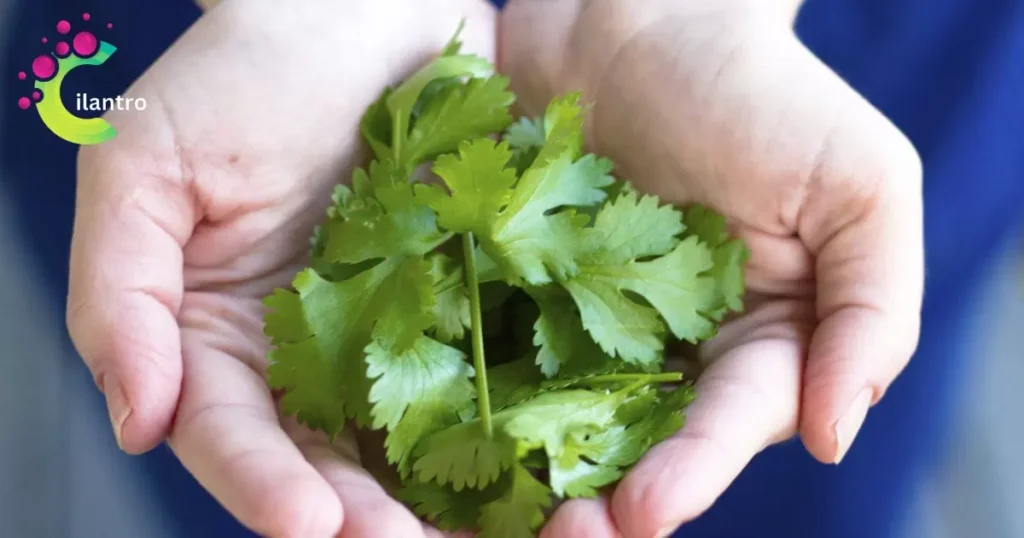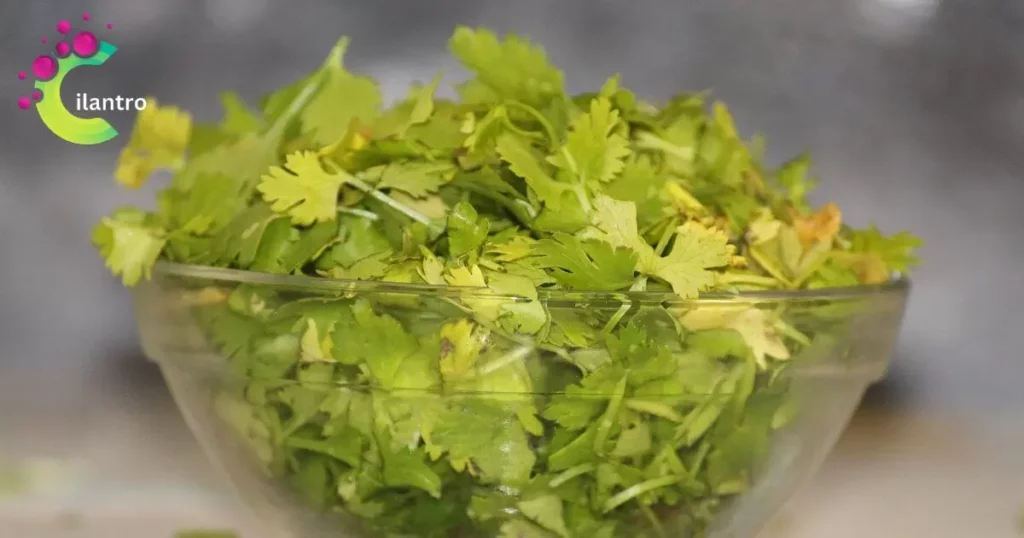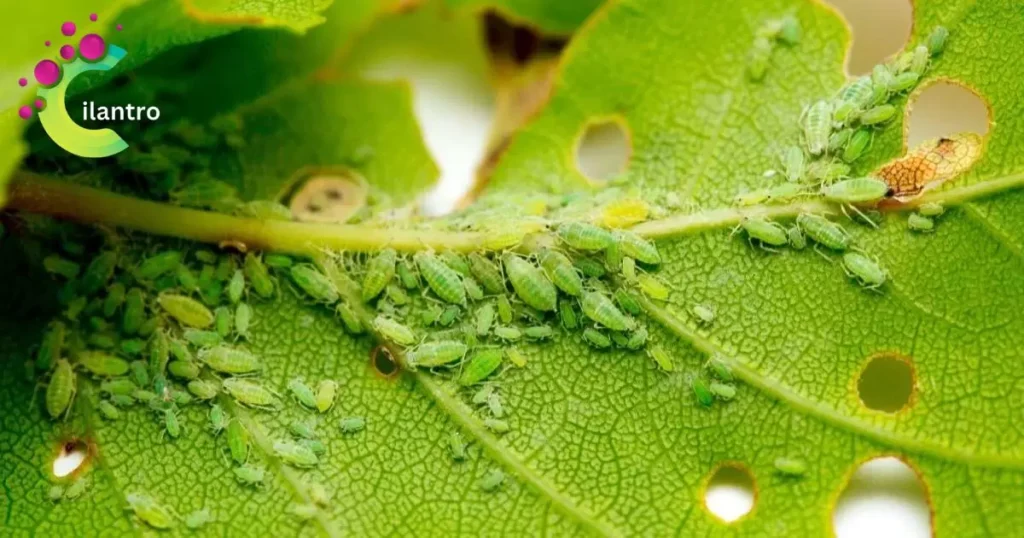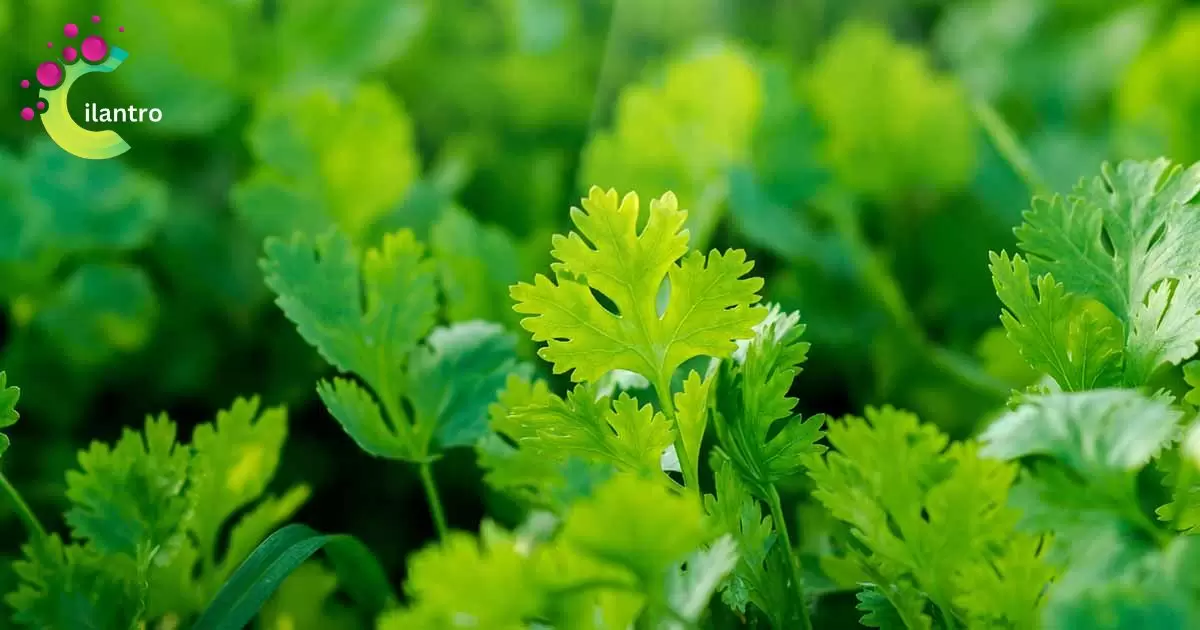Cilantro turns yellow due to factors like overwatering, poor soil drainage, or excessive sunlight. To keep it green, ensure well-draining soil, water moderately, and provide partial shade if needed.
Cilantro, also known as coriander in some regions, is a versatile herb that adds a distinctive flavor to various culinary dishes. The question is here, why is my cilantro turning yellow? It might be getting too much sunlight. Check the soil moisture; overwatering could be the source of the problem. Make sure you have proper drainage for the plant to thrive. Yellowing can also signal nutrient storage, so consider using a balanced fertilizer.
However, as a cilantro enthusiast, you may encounter a puzzling issue – the yellowing of cilantro leaves. This phenomenon can be disheartening, but fear not, as we delve into the potential reasons behind this occurrence and explore effective solutions to revive your cilantro plants. Yellowing may also indicate a lack of sunlight; ensure your cilantro gets at least 6 hours of sunlight daily.
In this article, we discuss more interesting and beneficial things about it, so stay tuned with us!
Environmental Factors: Sunlight and Temperature
One of the primary factors influencing the color of cilantro leaves is the environment in which the plant grows. Cilantro thrives in full sunlight, but excessive exposure can lead to Cilantro turning yellow.
If your cilantro is planted in a location with prolonged sunlight, consider moving it to partial shade for optimal growth. Cilantro prefers cooler temperatures, and excessive heat can lead to yellowing leaves. Meanwhile, enjoy the fresh flavor of cilantro in a delicious Lamb Sandwich.
Ensure that your cilantro is not exposed to extreme heat, especially during the peak summer months. Adequate spacing between plants can also facilitate better air circulation and temperature regulation.
Soil Quality and Nutrient Deficiencies
The quality of the soil in which cilantro is planted plays a crucial role in its overall health. Cilantro thrives in well-draining soil rich in organic matter. If the soil becomes compacted or lacks proper drainage, it can lead to root suffocation and the subsequent yellowing of leaves.
Paying attention to signs such as cilantro turning yellow is essential, as it may indicate underlying issues with the soil conditions.
Below is a simple table outlining some common soil quality indicators and associated nutrient deficiencies:
| Soil Quality Indicator | Nutrient Deficiency |
| Soil pH | Acidic soils (pH<6) – Calcium, Magnesium; Alkaline soils (pH>7) – Iron, Manganese, and Zinc |
| Organic Matter Content | Low organic matter – Nitrogen, Phosphorus, and potassium |
| Soil Texture | Sandy soil – Nitrogen, Phosphorus, Potassium; Clayey soil – Aeration issues; Nutrient leaching |
| Cation Exchange Capacity (CEC) | Low CEC – Calcium, Magnesium, and Potassium |
| Soil Color | Pale or yellowish – Nitrogen; Reddish – Iron, and Phosphorus. |
| Nutrient Deficiency Symptoms | Yellowing leaves – Nitrogen; Purple leaves – Phosphorus; poor fruit development – Potassium. |
| Microbial Activity | Low microbial activity – Nitrogen, organic matter. |
| Water Retention Capacity | Low water retention – Organic matter, Clay content |
| Soil Compaction | Compacted soil – Poor aeration, Nutrient uptake issues |
It’s important to note that specific nutrient deficiencies can vary based on the crops being grown and the region’s geological and climatic conditions. Soil testing is the best way to accurately determine nutrient levels and deficiencies in a particular area.
8 Reasons Why Is My Cilantro Turning Yellow?

Cilantro may turn yellow due to overwatering or poor drainage, causing root rot. Insufficient sunlight can also contribute to yellowing leaves. Here are the following reasons:
Overwatering
- Yellowing may occur if cilantro is waterlogged.
- Ensure proper drainage to prevent excess water retention.
Poor Soil Quality
- Check soil pH; cilantro prefers slightly acidic soil.
- Amend the soil with organic matter for better nutrient absorption.
Lack of Sunlight
- Cilantro needs at least 6 hours of sunlight daily.
- Ensure it’s planted in a sunny location for optimal growth.
Pests or Diseases
- Inspect leaves for pests like aphids or diseases.
- Treat with natural remedies or pesticides as needed.
Nutrient Deficiency
- Yellowing may indicate a lack of essential nutrients.
- Use a balanced fertilizer to provide necessary elements.
Overcrowding
- Cilantro plants need space to grow.
- Thin out overcrowded plants to improve air circulation.
Temperature Stress
- Cilantro prefers cooler temperatures.
- Shield plants during hot periods to prevent stress.
Harvesting Timing
- Harvest leaves regularly, but avoid excessive cutting.
- Allow some leaves to remain for continued growth.
Carrot Motley Dwarf Disease and Leaf Spot
It is a plant illness that affects carrots, causing stunted growth and the yellowing of leaves. Cilantro turning yellow is another common issue that can occur. Leaf spots, another common issue, show up as dark spots on carrot leaves, potentially harming the overall health of the plant.
Gardeners should keep an eye out for these problems and take prompt action to ensure their carrot crop stays healthy.
Do I fix yellow Cilantro leaves?

If your cilantro leaves turn yellow, it might be due to overwatering or poor soil drainage. Adjust watering, ensure good drainage, and your cilantro should perk up with vibrant green leaves.
Here are the following steps:
Check sunlight: Ensure cilantro gets enough sunlight each day.
Water properly: Don’t overwater or underwater; maintain a consistent watering schedule.
Well-draining soil: Use well-draining soil to prevent waterlogged roots.
Fertilize wisely: Apply a balanced fertilizer to replenish nutrients.
Trim yellow leaves: Remove yellowing leaves to promote new growth.
Pest control: Check for pests and treat if necessary using natural remedies or insecticidal soap.
Adequate spacing: Ensure proper spacing between cilantro plants for air circulation.
Disease prevention: Keep plants dry to prevent fungal diseases.
Temperature control: Protect cilantro from extreme temperatures and drafts.
Monitor health: Regularly inspect cilantro for signs of stress or nutrient deficiencies.
Is it safe to eat Yellowed Cilantro?
If cilantro turns yellow, it might not be safe to eat. It could be a sign of spoilage. Smell it; if it’s bad, don’t eat it. Fresh cilantro is safer and tastier.
Discard anything with an off-putting odor. Yellowing can indicate aging or spoilage, especially if you notice cilantro turning yellow. Check for a strong, unpleasant odor, and if present, it’s best to discard the cilantro.
Always prioritize freshness for the best flavor and safety.
Watering Practices: Finding the Right Balance

Watering is a critical aspect of cilantro care, and improper watering practices can contribute to yellowing leaves. Both overwatering and underwatering can stress the plant and lead to discoloration. If you notice your cilantro turning yellow, it may be a sign of water-related issues.
Ensure that you maintain a consistent watering schedule, allowing the soil to dry out slightly between waterings. Furthermore, cilantro plants are susceptible to root rot in waterlogged conditions.
If the soil remains excessively wet, the roots may rot, resulting in yellowing leaves and overall decline. To prevent this, plant cilantro in well-draining soil and use containers with drainage holes to promote adequate water drainage.
Pests and Diseases And Silent Culprits

Pests and diseases can silently wreak havoc on cilantro plants, causing yellowing leaves, among other symptoms. Aphids, spider mites, and fungal infections are common adversaries. Regularly inspect your cilantro for any signs of infestation or disease, such as cilantro turning yellow.
Aphids and spider mites can be controlled with insecticidal soap or neem oil. Remove and dispose of any infected or severely damaged leaves to prevent the spread of diseases. Applying a fungicide may be necessary if fungal issues are identified.
Always follow the instructions on the product label and use caution when applying any pesticides.
Unseen Invaders in Agriculture
In agriculture, pests and diseases silently invade crops, leading to reduced yields and economic losses. Farmers must employ proactive measures to protect their crops from these hidden culprits.
Health Hazards at Home
In homes, pests like mosquitoes and rodents carry diseases that can harm our health. Maintaining cleanliness and employing preventive measures are essential to keeping these silent threats at bay.
pH Levels: Striking the Right Balance
Cilantro prefers slightly acidic to neutral soil with a pH range of 6.2 to 6.8. If the soil pH is too high or too low, it can impact the plant’s ability to absorb essential nutrients, leading to yellowing leaves.
Test the soil pH and make adjustments as needed using amendments like lime to raise pH or sulfur to lower it.
Aging and Bolting: Natural Processes
As cilantro plants age, they undergo natural processes that can result in yellowing leaves, particularly when faced with environmental changes. Cilantro turning yellow is often observed as a response to factors such as temperature fluctuations.
Cilantro is a cool-season herb, and as temperatures rise, the plant may bolt, producing flowers and seeds.
This transition can cause the leaves to turn yellow and become bitter. Harvesting cilantro leaves regularly and preventing bolting by planting in cooler seasons can help maintain the plant’s vitality.
Can I turn my Cilantro Leaves Green again?

Yeah sure. If your cilantro leaves turn yellow, it may be due to overwatering or poor soil drainage. To bring them back to green, adjust the watering schedule and ensure proper drainage.
Trim the yellow leaves and give the plant some time in the sunlight. With care, your cilantro should regain its vibrant green color.
Container Gardening: Tailoring the Environment
If you’re facing challenges with outdoor conditions, such as cilantro turning yellow, consider growing cilantro in containers. Container gardening allows you to control the soil composition, drainage, and placement of the plant.
Ensure the containers have drainage holes, use high-quality potting mix, and place them in a location with optimal sunlight and temperature conditions. Container gardening can be particularly advantageous in regions with extreme weather variations.
Pruning and Harvesting Techniques
Pruning and harvesting cilantro properly can significantly impact its overall health, especially when addressing specific concerns such as cilantro turning yellow. Regularly prune the plant to encourage bushier growth and prevent it from becoming overly branched.
When harvesting, focus on removing the outer leaves, allowing the inner leaves to continue growing. Avoid harvesting more than one-third of the plant at a time to avoid stress. Regular pruning and harvesting with care contribute to a healthier and more vibrant cilantro plant.
Observing Cilantro Varieties: Unique Characteristics
Different cilantro varieties may exhibit varying degrees of susceptibility to environmental stressors, such as changes in climate or specific growing conditions. For instance, cilantro turning yellow is a common issue that may be influenced by factors like soil quality, water levels, or sunlight exposure.
Some varieties are more resilient in specific climates or conditions, but understanding and addressing issues like cilantro turning yellow can help optimize the overall health and appearance of the plants.
Explore and experiment with different cilantro varieties to identify those that thrive best in your local environment. This can enhance your chances of success and reduce the likelihood of yellowing leaves.
Hydroponic Cultivation: Controlled Environment
For those interested in experimenting with advanced growing methods, hydroponic cultivation of cilantro can provide a controlled environment with optimal nutrient delivery.
Hydroponics can help mitigate soil-related issues and offer precise control over factors such as pH and nutrient levels. This method is particularly beneficial for urban gardening or areas with limited outdoor space.
Mulching and Protecting the Roots
Mulching around your cilantro plants can provide numerous benefits. Mulch helps retain soil moisture, regulates soil temperature, and suppresses weed growth.
Use organic mulch, like straw or wood chips, to create a protective layer around the base of your cilantro. This can prevent soil compaction, reduce the risk of diseases, and contribute to overall plant vigor.
FAQ’s
How do you bring cilantro back to life?
Water the cilantro thoroughly and place it in a jar of water in the refrigerator to revive its freshness.
Can cilantro get too much sun?
Yes, cilantro can get too much sun, causing it to bolt and produce seeds instead of leaves.
Can you eat yellow cilantro leaves?
No, you cannot eat yellow cilantro leaves, as they indicate aging and loss of flavor.
How often should I water cilantro?
Water cilantro when the top inch of soil feels dry, usually every 1 to 2 days.
Does cilantro regrow after cutting?
No, cilantro does not regrow after cutting.
Conclusion
Environmental factors like sunlight and temperature strongly impact cilantro leaves. Full sunlight is ideal, but excessive exposure can lead to yellowing, necessitating a move to partial shade.
Cooler temperatures are preferred to protect against yellowing caused by excessive heat. Proper spacing aids air circulation and temperature regulation.
Soil quality, including factors like pH and texture, is critical. Well-draining soil rich in organic matter is optimal, preventing yellowing from soil-related issues.
Why Is My Cilantro Turning Yellow? Cilantro turns yellow due to overwatering, poor soil, a lack of sunlight, pests, nutrient deficiencies, overcrowding, temperature stress, or improper harvesting. Prompt action is crucial, but yellowed cilantro may not be safe to eat, signaling potential spoilage.
Watering practices, pest control, and understanding pH levels are vital. Different varieties may react differently to stress, and hydroponic cultivation offers a controlled environment. Pruning, harvesting, and mulching contribute to overall plant health.

Meet our website’s admin, a culinary enthusiast dedicated to curating delectable food ideas. With a passion for gastronomy, they expertly craft and present a diverse array of recipes, tips, and inspirations, making our platform a go-to destination for culinary creativity.











